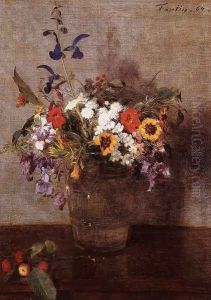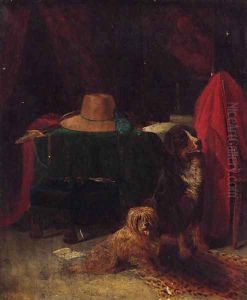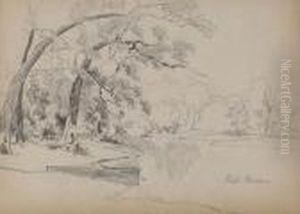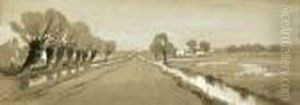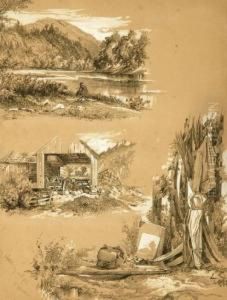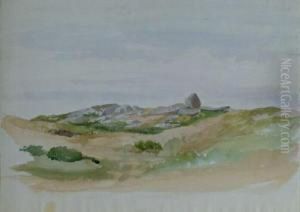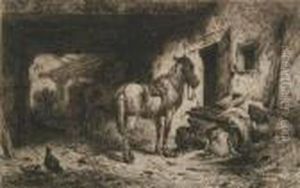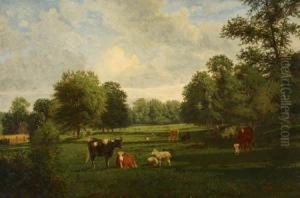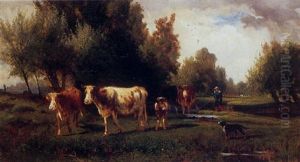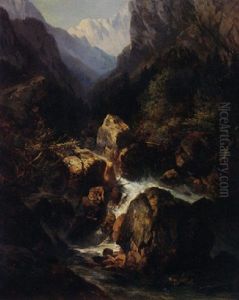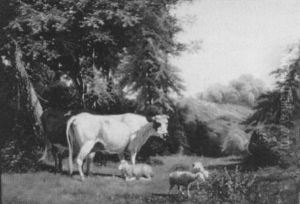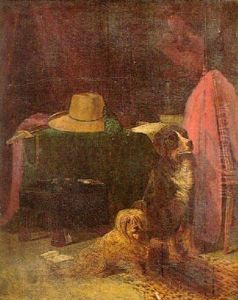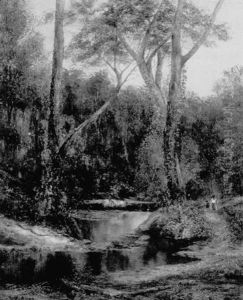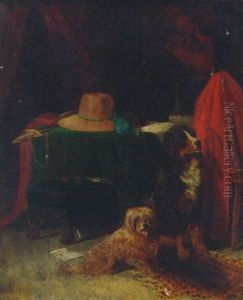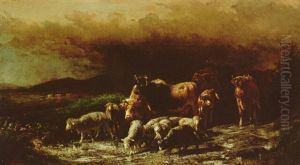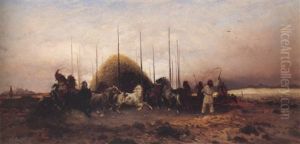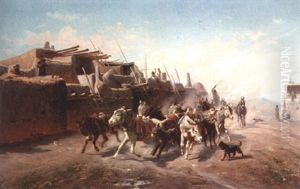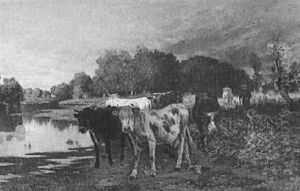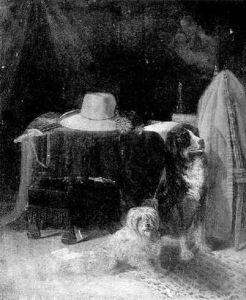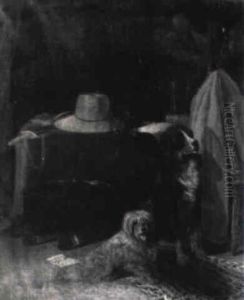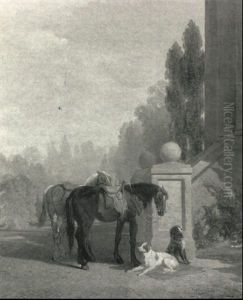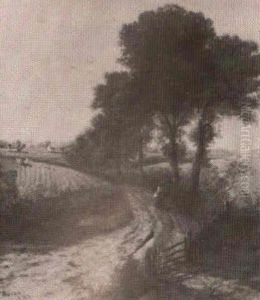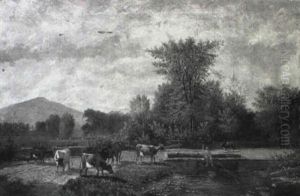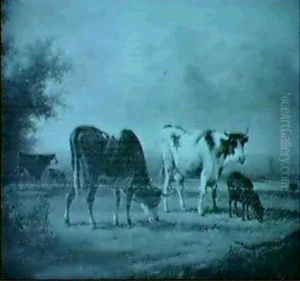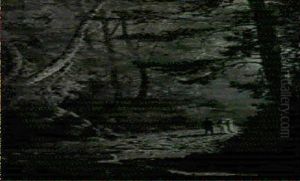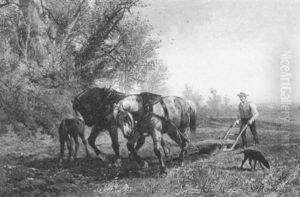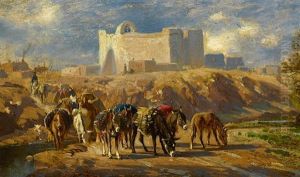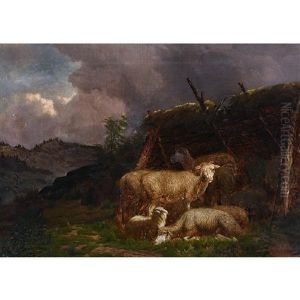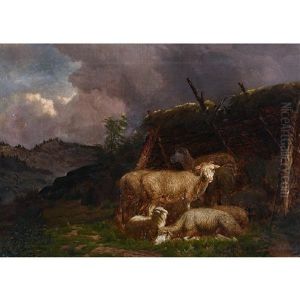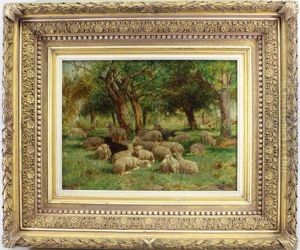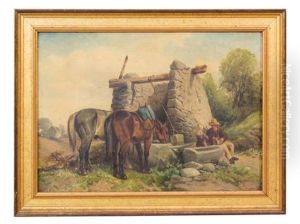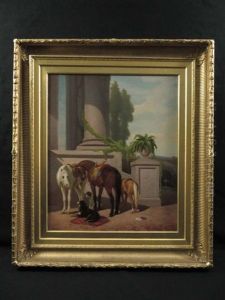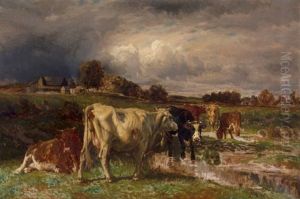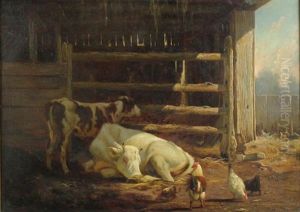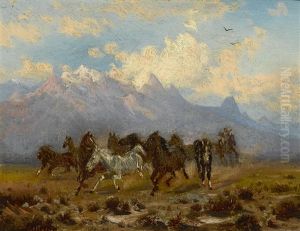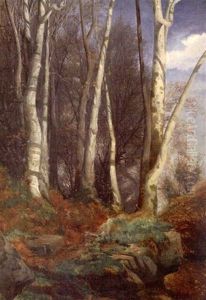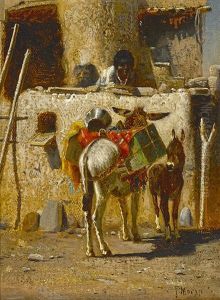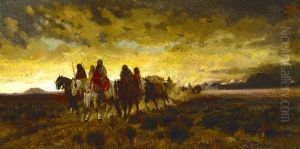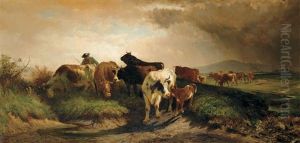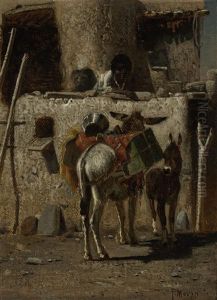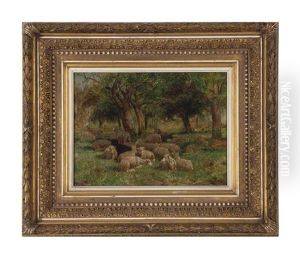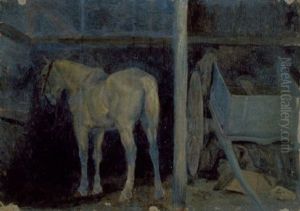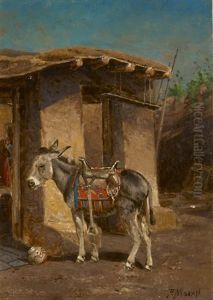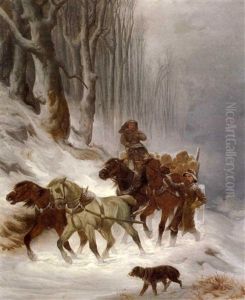Peter Moran Paintings
Peter Moran was an American artist known for his etchings and paintings of pastoral scenes, often featuring cattle and sheep. Born on March 4, 1841, in Bolton, Lancashire, England, Peter along with his family immigrated to the United States when he was a child, settling in Philadelphia, Pennsylvania. He was part of an artistically talented family; his brothers Thomas and Edward Moran were also accomplished artists.
Peter initially trained as a weaver, but he soon followed in his brothers' footsteps and turned to art. He received his art education at the Pennsylvania Academy of the Fine Arts under the tutelage of James Hamilton and later studied under Paul Weber. Moran specialized in etchings, which were well-received, and he became a prominent member of the artistic community in Philadelphia.
Moran's work often reflected his interest in the American West, and he was particularly noted for his depictions of the New Mexico landscape, which he visited several times. His travels to the West began in the 1870s, and he was one of the early Eastern artists to capture the vastness and beauty of the western United States on canvas and in print.
Moran was also an animal painter, with a significant portion of his oeuvre dedicated to bucolic scenes involving cattle and sheep, which he rendered with great sensitivity and attention to detail. He was influenced by the French Barbizon school, which emphasized natural landscapes and rural scenes.
Throughout his career, Peter Moran exhibited his work widely, including at the Pennsylvania Academy of the Fine Arts, the National Academy of Design in New York, and the Paris Salon. His artwork was well-received, and he earned several medals and accolades for his contributions to American art.
Peter Moran passed away on October 25, 1914, in Philadelphia. His legacy includes a rich body of work that continues to be appreciated for its portrayal of the American landscape and rural life in the late 19th and early 20th centuries. His etchings and paintings are held in numerous public and private collections and serve as a testament to his skill and his passion for the natural world.
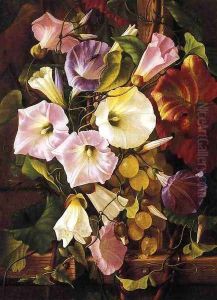
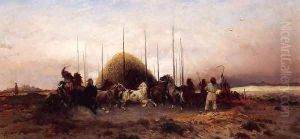
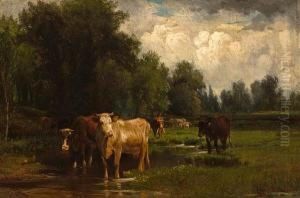
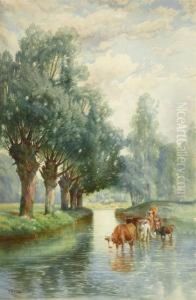
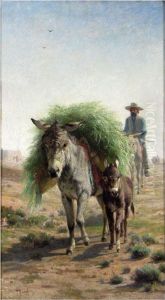
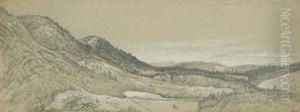
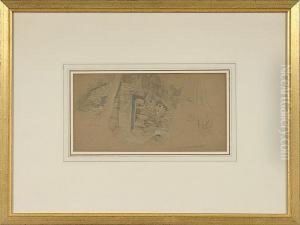
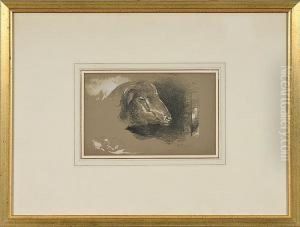
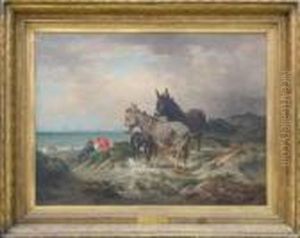
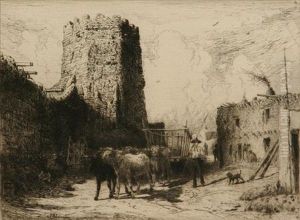
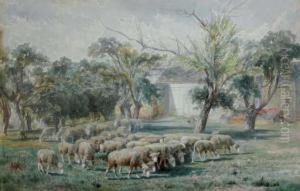
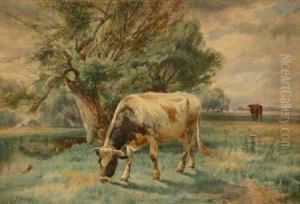
![The Pool; [cows Drinking From Pond]; [sheep Grazing]; [the Returnhome]](https://www.niceartgallery.com/imgs/834976/s/peter-moran-the-pool-cows-drinking-from-pond-sheep-grazing-the-returnhome-867c5eac.jpg)
